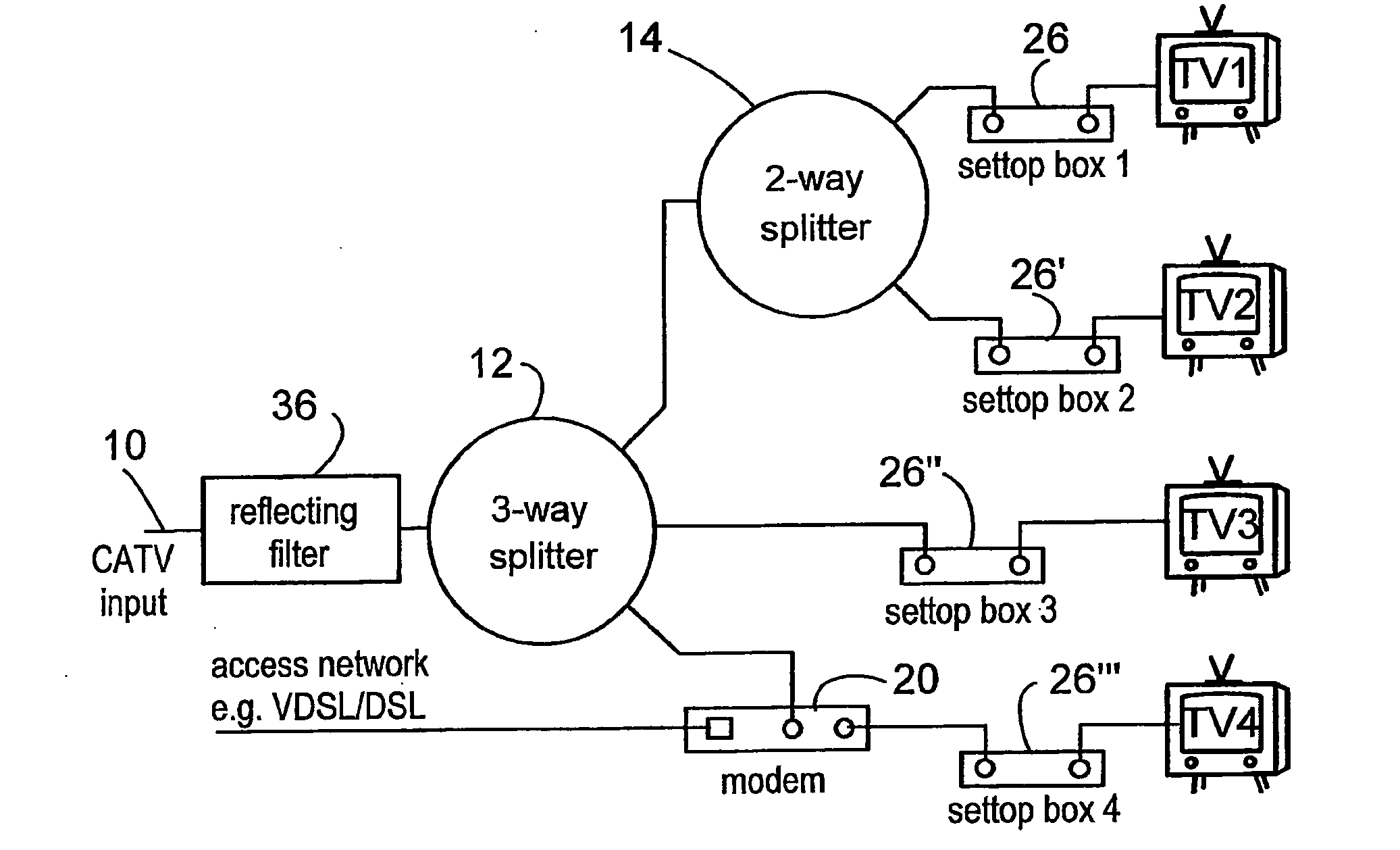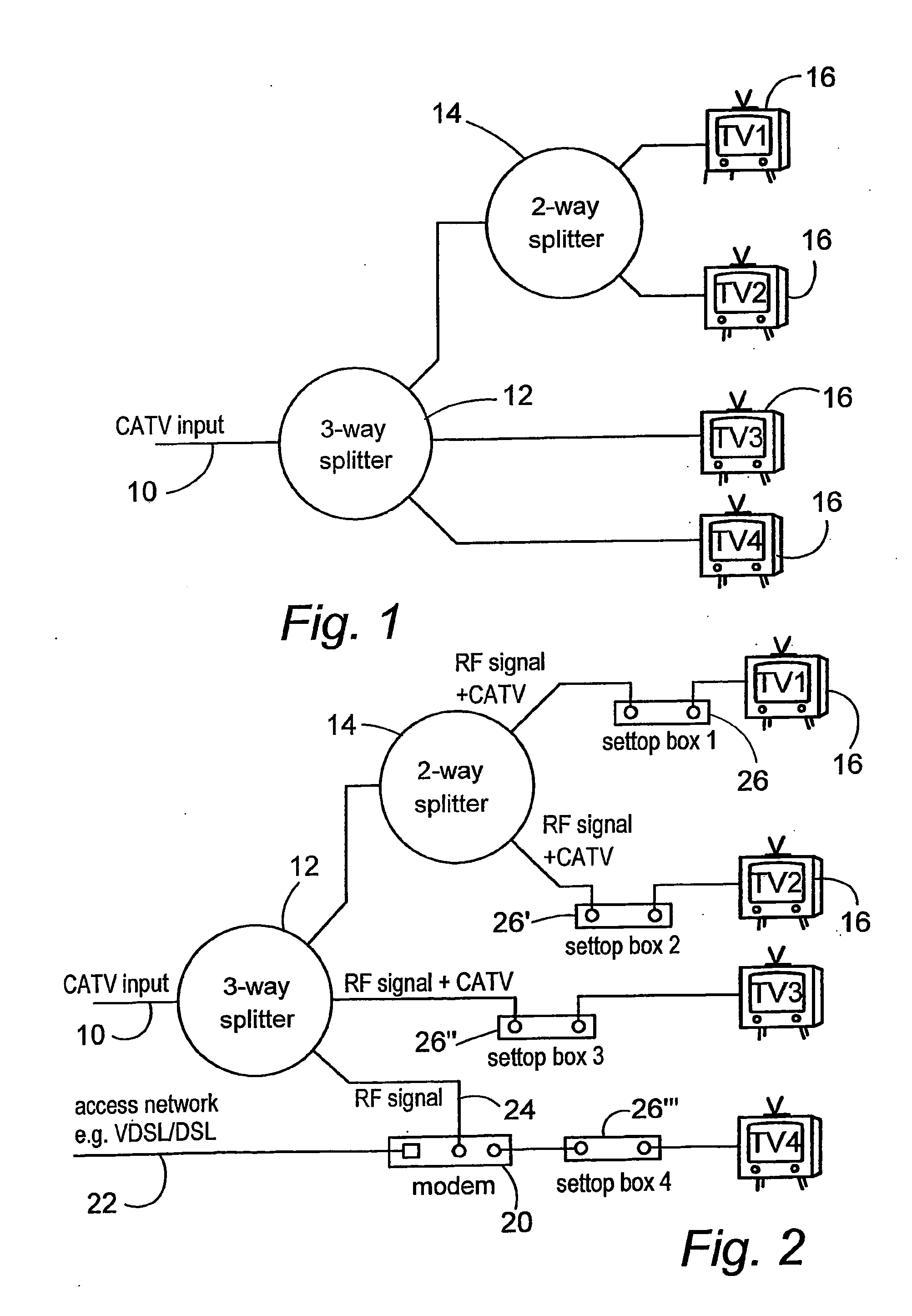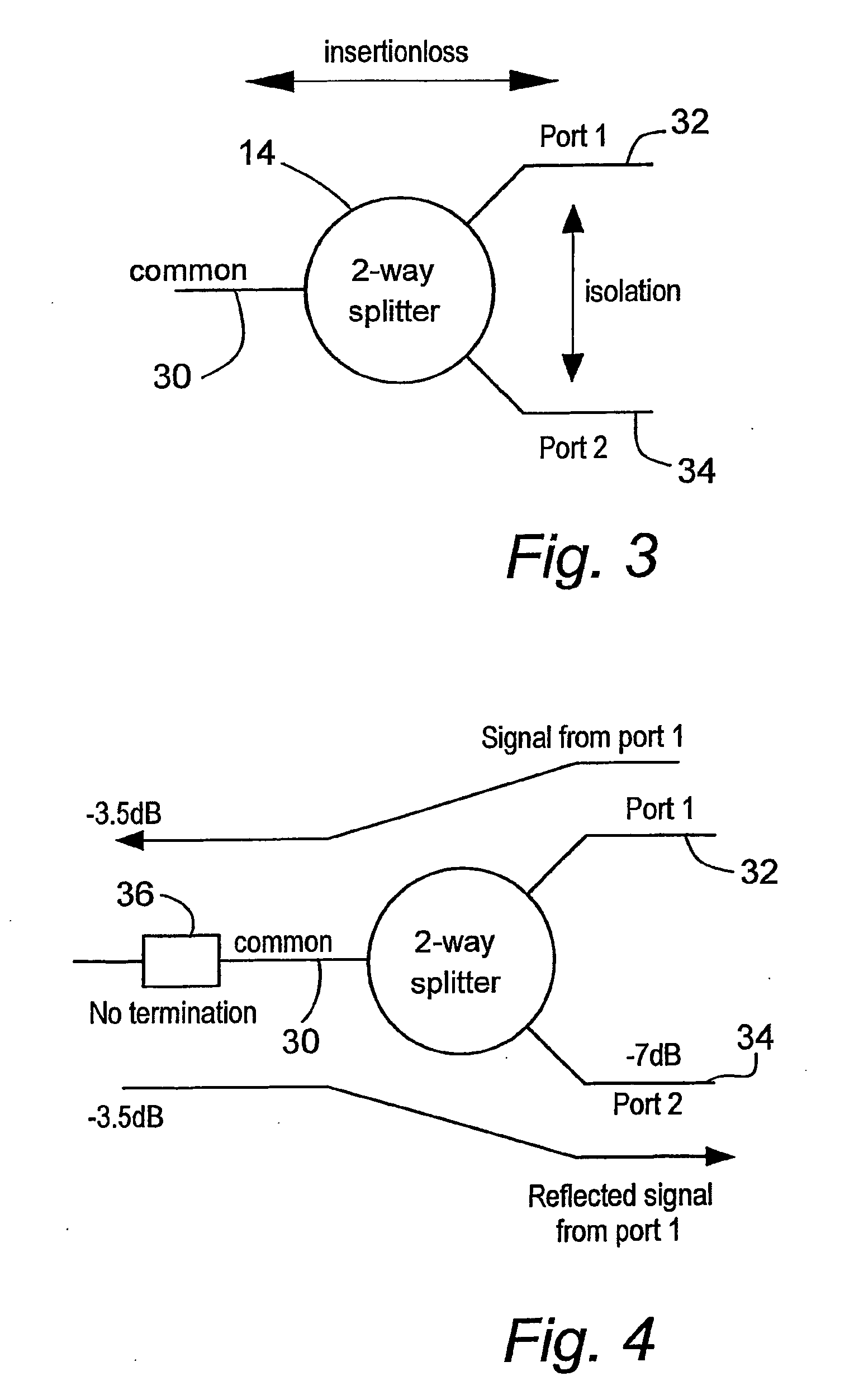Loss reduction in a coaxial network
- Summary
- Abstract
- Description
- Claims
- Application Information
AI Technical Summary
Benefits of technology
Problems solved by technology
Method used
Image
Examples
Embodiment Construction
[0018]FIG. 1 shows a typical coaxial in-home TV network comprising an input 10 to which a cable television signal provider can connect, and splitters 12, 14 which split the signal to service a plurality of items of subscriber equipment 16, such as televisions. This network is built with a 3-way and a cascaded 2-way splitter 12, 14 to allow four television or radio sets 16 to be supplied with the signal from the cable television provider. This is just by way of example, as many other topologies using different combinations of splitters to supply a different number of outlets can be designed. No two in-home networks are the same and the number of television locations, the number of splitters and the location of splitters will vary from home to home. In many cases it is very difficult to get an accurate overview of the network as often there is no network topology available and the splitters can be hidden between walls or behind panels.
[0019]Such a network can be used as a data network...
PUM
 Login to View More
Login to View More Abstract
Description
Claims
Application Information
 Login to View More
Login to View More - R&D
- Intellectual Property
- Life Sciences
- Materials
- Tech Scout
- Unparalleled Data Quality
- Higher Quality Content
- 60% Fewer Hallucinations
Browse by: Latest US Patents, China's latest patents, Technical Efficacy Thesaurus, Application Domain, Technology Topic, Popular Technical Reports.
© 2025 PatSnap. All rights reserved.Legal|Privacy policy|Modern Slavery Act Transparency Statement|Sitemap|About US| Contact US: help@patsnap.com



